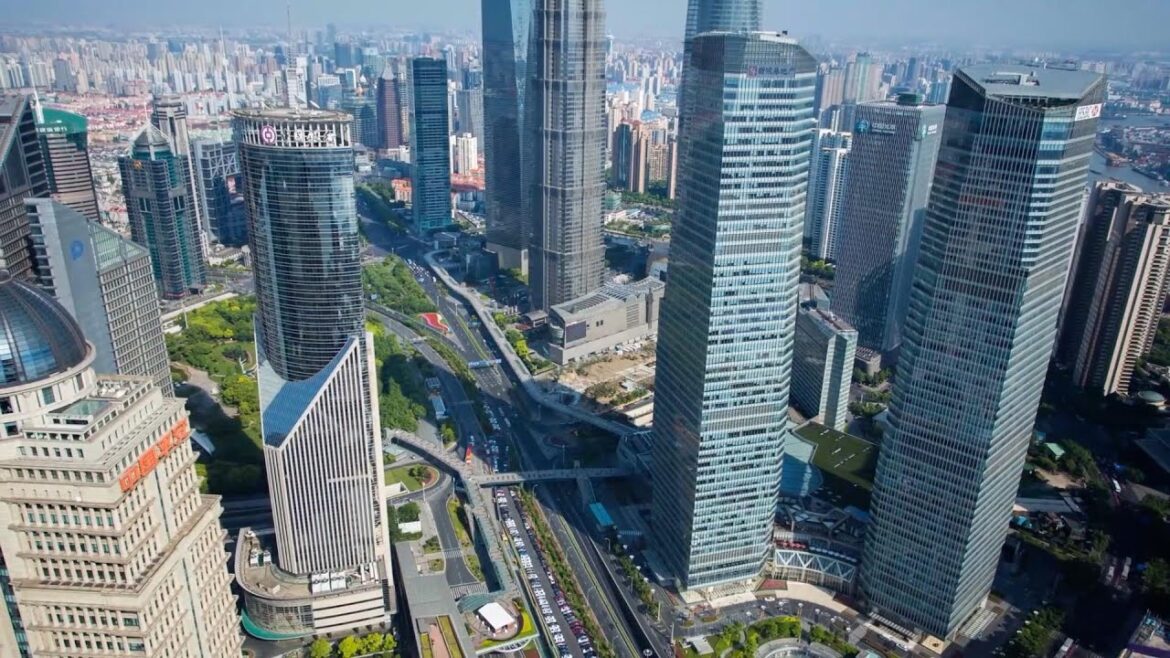SHANGHAI (Xinhua/Internews): In the eastern Chinese metropolis of Shanghai, a new round of industrial upgrading is in progress, as the country moves to foster strategic emerging industries and technological innovation — in other words, the “new quality productive forces.”
From large-scale scientific facilities and high-quality incubators to robots, automobiles and biomedicine, the concept of new quality productive forces has penetrated all aspects of the production process in Shanghai, making production more efficient and people’s lives better.
The adoption of advanced technologies such as robots, artificial intelligence, industrial internet and big data is transforming traditional factory environments. The outdated impression of factories with roaring machines and loud conversations is steadily fading away.
Shanghai is the first city in China to count robot density, the number of robots per 10,000 employees. By 2025, the robot density in key industries in Shanghai will reach 500 units.At a factory of Shanghai Automotive Industry Corporation with over 400 robots, a new car rolls off the production line roughly every 70 seconds.
With the help of image recognition technology, the body assembly robot can accurately find the corresponding engines of different models from the stack. At the same time, the wheel installation robot can complete the assembly of a car’s four wheels by itself.
Every 12 minutes, a “Made in the Yangtze River Delta” robot rolls off the production line at Shanghai STEP Robotics Corporation, with all the parts sourced from Shanghai and Jiangsu, Zhejiang and Anhui provinces.
“Based on AI and big data, our robots’ intelligent perception, trajectory planning, operational accuracy and interaction ability are constantly optimized,” said Li Mingyang, chairman of JAKA. Walking into the cold-rolling workshop at Baosteel in Shanghai is like entering a dark steel jungle.
The “AI brain” supports the main control room with only three operators. Robots have replaced manual work in the workshop, so the lights are often turned off to save energy. Even automotive panels that require high process complexity can still be smoothly produced with almost no lighting.
Transforming business ideas into commercially viable applications has never been more achievable than it is today in Shanghai, thanks to large-scale scientific facilities and high-quality incubators.The Shanghai Synchrotron Radiation Facility (SSRF) has the ability to illuminate the microscopic world, which is like providing a pair of “intelligent eyes” for scientific research.
With 34 beamlines and 46 experimental stations, the SSRF has served more than 47,000 users from nearly 800 institutes and over 4,500 research teams across the country and supported users in completing more than 20,000 experimental projects, according to the Shanghai Advanced Research Institute under the Chinese Academy of Sciences.
Shanghai boasts 20 large-scale scientific facilities that are either built, under construction, or planned. The world’s largest and most comprehensive photon science facility cluster has already taken shape.
If large scientific facilities provide “super tools” for scientific and technological innovation to achieve breakthroughs from 0 to 1, then high-quality incubation and acceleration institutions help innovation results achieve a leap from 1 to 10.
Data showed that over 20 foundation models have been registered and launched in Shanghai. The Shanghai Foundation Model Innovation Center, known as the first stop for foundation model startups to establish themselves in Shanghai, has witnessed the flourishing of nearly 70 relevant companies, heralding a round of AI revolution.
In fields of high-end equipment, smart terminals, biomedicine, aerospace and other industries, “future” has always been the key word in the high-quality development of Shanghai.Adopting the latest technologies from the SSRF, Ruijin Hospital Proton Therapy Center has treated over 100 patients using China’s first domestically developed proton therapy system.
United Imaging, a Shanghai-based private enterprise founded in 2011, has developed a series of medical imaging and radiotherapy products and life science instruments, and can provide medical digitization and medical artificial intelligence solutions.
The cruise industry, with a long industrial chain and a high degree of internationalization, is often called “the golden industry that floats.” Over 1,000 domestic and foreign manufacturers were involved in the building of Adora Magic City, China’s first domestically built large cruise ship.
Since its maiden voyage, Adora Magic City has completed 34 journeys and received nearly 150,000 tourists. In the meantime, China’s second homegrown large cruise ship entered a shipyard in Shanghai for final assembly. Though boasting a larger size, the construction efficiency of the new ship has accelerated by 20 percent. It is expected to be delivered by the end of 2026.
With 34 beamlines and 46 experimental stations, the SSRF has served more than 47,000 users from nearly 800 institutes and over 4,500 research teams across the country and supported users in completing more than 20,000 experimental projects, according to the Shanghai Advanced Research Institute under the Chinese Academy of Sciences.


